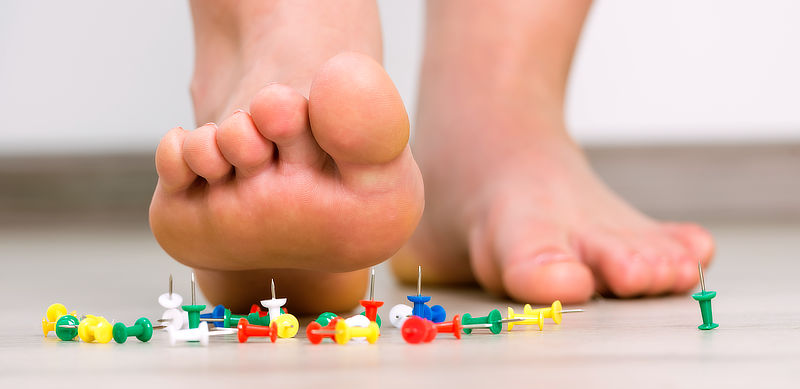
If you’re a diagnosed sufferer of the debilitating foot and heel pain condition that is plantar fasciitis do you know 6 key ways to avoid a flare up? Lifestyle issues can trigger a new episode, prevent your treatment working or even make you take a step back on the road to recovery. Let’s walk you…ever so gently, through the common mistakes that could be making your condition worse.
Old Shoes
If your shoes are well worn and have too much ‘play’ in them either side your foot will not be adequately supported and can cause strain to the plantar fascia which will lack support. Similarly, if you use inserts to help your plantar fasciitis and buy a new pair of new shoes, then be sure to replace your old inserts at the same time. Ill-fitting inserts can do more harm than good.
New Shoes
Just as old shoes lack support, new shoes may have too much and require ‘breaking in’ for your foot to feel comfortable. Avoid this if you can and try to choose a pair that offers comfort and cradling from day one, especially a shoe with arch support.
Bare Feet
Don’t fall into the trap of thinking that going bare foot is natural and therefore best. Take it very easy doing yoga or Pilates as feet prone to strain are easy to overstretch and cause you problems and pain.
Everyday Injury
It may sound obvious but going over on your foot or ankle can trigger an old strain in the ligament and start a new bout of plantar fasciitis. It doesn’t need to be a sports injury or strain caused by exercise, a simple slip on the ice or cockling over a curb can put you right back to square one, so take care, especially in winter time.
Becoming Overweight
Gaining weight through overeating, inactivity, injury or even pregnancy can put additional strain on your foot and cause an episode of chronic heel and foot pain. Carrying excess body fat can also change the way you walk and weight-bear so can have knock on effect for plantar fasciitis sufferers.
Quest for Fitness
It’s possible that if you overdo it in trying to lose weight with a vigorous new exercise regime or cardiovascular fitness class you might cause a flare up of foot pain which might be plantar fasciitis. If you’re already sporty and active try to ensure you pick the right footwear for whatever sport you’re undertaking. Good running shoes for your 5K, netball trainers for court time and robust walking boots for a day on the fells will all protect your feet.
Next week: Plantar Fasciitis– Exercises to Ease the Pain
(Sign up using the form below to never miss a weekly article.)



